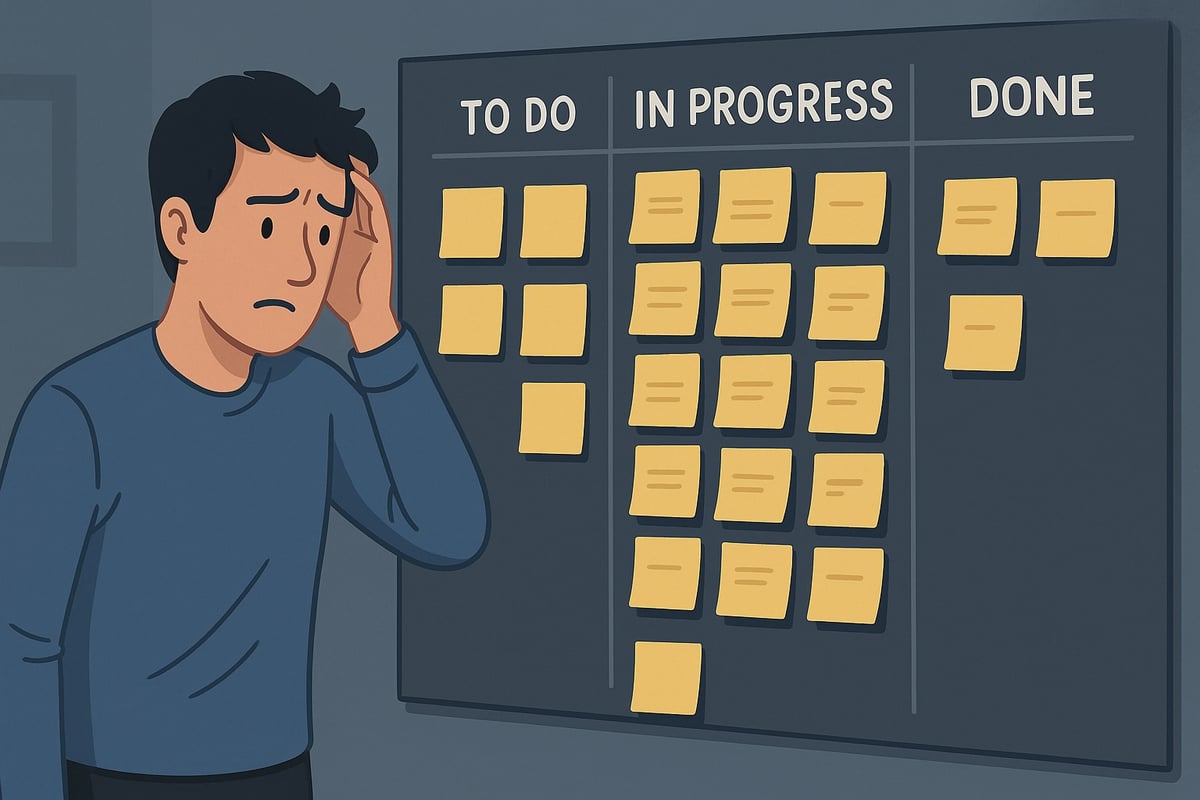The divide between engineering teams and the C-suite has traditionally been hard to bridge. While engineers speak in terms of deployment pipelines and code quality, executives focus on market share and bottom-line results. But in today’s technology-driven organizations, engineering performance directly impacts business outcomes, making it essential for leaders to identify metrics that connect technical excellence to strategic success.
The Business Impact of Engineering Performance
The DORA (DevOps Research and Assessment) team at Google has been investigating the capabilities, practices, and measures of high-performing technology-driven teams and organizations for over a decade. Their research now includes insights from more than 39,000 professionals across various industries globally, confirming that high-performing engineering teams consistently deliver better business outcomes: higher profitability, increased market share, greater productivity, and improved customer satisfaction.
But which metrics actually matter to executives? More importantly, which ones should engineering leaders focus on to demonstrate value to the business?
Core Delivery Metrics with Direct Business Impact
Deployment Frequency: The Speed of Innovation
Elite organizations deploy code multiple times per day, way more frequently than their peers. For executives, this translates directly to business agility and competitive advantage.
According to Plandek’s research on software delivery KPIs for the C-Suite, “Deployment Frequency is another fundamental measure of Agile software delivery. A core objective of Agile delivery is the ability to develop and deploy small software increments rapidly to live.” It’s a powerful metric for focusing effort across the entire delivery organization.
This capability allows organizations to quickly respond to market changes, incorporate customer feedback, and address competitive pressures, all critical factors for business success.
Lead Time for Changes: From Idea to Reality
Lead time measures how long it takes for code to go from commit to successful deployment. High performers deliver changes every day, significantly faster than low performers. In business terms, shorter lead times mean faster time-to-market for new features, directly impacting revenue generation and market positioning.
Lead time is a core Agile software delivery metric that tracks an organization’s ability to deliver software early and often. The concept is borrowed from lean manufacturing and refers to the overall time to deliver an increment of software from initial idea through to deployment to live – encompassing the complete end-to-end software delivery life cycle (SDLC).
When communicating with executives, consider reframing “lead time” as “speed to market” – language that resonates with business priorities.
Change Failure Rate: Quality at Speed
Change failure rate measures the percentage of deployments causing production failures. Top organizations maintain failure rates three times lower than industry peers. This metric directly impacts customer experience, operational costs, and brand reputation.
“Even though Agile’s main purpose is to increase forward motion by speed, the lack of addressing quality issues eventually reduces forward motion as problems accumulate.”
-SonarSource
For the C-suite, a low change failure rate demonstrates engineering excellence while directly contributing to customer retention and reduced operational costs.
Time to Restore Service: Business Continuity
When incidents do occur, how quickly can your team recover? Elite performers restore service in under one hour, many times faster than low performers. This metric directly connects to business continuity, revenue protection, and customer confidence.
Downtime costs vary across industries, but ensuring rapid service restoration is not just a technical win but a direct financial benefit. For executives, faster recovery means less lost revenue, lower support costs, and more robust business operations.
Strategic Alignment Metrics for Executive Decision-Making
Investment Profile: Where Engineering Resources Go
One of the most powerful metrics for C-suite conversations is the investment profile. It’s a clear visualization of how engineering resources are allocated across different categories of work.
As Yishai Beeri, CTO at LinearB, explains: “An investment profile is a good bridge area between product and engineering because it represents where we are actually investing. Not the plan, the actual work - where is it actually happening?”
A investment profile could include:
- New Value: The actions performed to invest in new features that increase revenue and growth by new customer acquisition or expansion (55%)
- Feature Enhancements: The actions taken to enhance features or deliver a product that ensures customer satisfaction (25%)
- Developer Experience: The actions performed to improve the productivity of development teams and their overall experience (10%)
- KTLO (Keeping the Lights On): The minimum tasks a company is required to perform in order to stay operational on a daily level while maintaining a stable level of service (10%)
This breakdown gives executives critical visibility into how engineering resources align with business priorities and where adjustments might be needed.
On-Time Delivery: Building Organizational Trust
Predictable delivery is perhaps the most foundational metric for building trust between engineering and the rest of the organization.
According to Ryan Kuchova at Jellyfish, “Across all functions, this is the metric that demonstrates other business leaders can trust their CTO or VP of engineering. On-time delivery is a tough metric to deliver, but consistent reliability demonstrates that the engineering team is tracking their performance and responding quickly when things start to go off the rails.”
Plandek similarly emphasizes this with their “Sprint Target Completion” metric, which they describe as “the basic measure of a Scrum Team’s ability to hit their self-imposed sprint goals – and hence their dependability.” They note that “high-performing Scrum Teams will consistently have Sprint Target Completion rates in excess of 85%.”
For executives, on-time delivery translates to business predictability and the ability to make reliable commitments to customers, stakeholders, and the market.
Developer Experience Metrics That Drive Business Performance
Many organizations treat developer experience as a “nice to have” rather than a business-critical investment. However, research increasingly shows that developer experience directly impacts business outcomes.
Developer experience is a key strategic business lever that directly influences an organization’s ability to deliver value. Rather than being solely an engineering concern, DevEx is a strategic driver for reducing time to market and accelerating feature delivery across the organization.
Key developer experience metrics with business impact include:
-
Developer Satisfaction: Teams with high developer satisfaction deliver more innovation and experience lower turnover – directly affecting your talent retention costs and innovation capabilities.
-
Context Switching: This metric quantifies productivity losses from fragmented work. High context switching correlates with reduced productivity and increased delivery times, ultimately impacting your bottom-line results.
-
Flow Efficiency: This measures the proportion of time work items spend in active versus waiting states. Flow efficiency examines how much time tickets spend in an ‘active’ versus ‘inactive’ status. The less time they spend in an ‘inactive’ status, the more efficient the end-to-end process and the quicker software will be delivered.
Effectively Communicating Engineering Metrics to Executives
Even the most impactful metrics will fall flat if not communicated effectively to executive audiences. Here are proven strategies for making your metrics resonate:
Translate Technical Terminology to Business Language
When presenting engineering metrics to executives, translate technical terms into business language:
| Technical Term | Business Translation |
|---|---|
| Deployment Frequency | Business Agility |
| Lead Time | Speed to Market |
| Change Failure Rate | Service Reliability |
| MTTR | Business Continuity |
For non-technical executives, you may use terms like time to market over lead time or cycle time. Depending on who you’re talking to, the metrics could look a bit different, based on what is most important to the person you’re discussing the metrics with.
Tailor Metrics to Different Executive Audiences
Different executives care about different aspects of engineering performance:
-
CFOs want to understand cost efficiency and ROI. Finance leaders typically dig deeper than the board, focusing on unit economics and team cost efficiency. Help your CFO understand cost centers by clearly explaining which resources are allocated to different aspects of product development.
-
Sales and Marketing leaders primarily want predictable delivery dates. Your CRO and CMO are focused on when deliverables will be ready for customers and campaigns. They generally aren’t concerned with technical challenges or engineering-specific metrics like story points—they need dates they can rely on.
-
CEOs typically focus on how engineering impacts competitive advantage, innovation pace, and overall business agility.
Customizing your metrics and language for each audience dramatically improves engagement and decision-making.
Common Pitfalls to Avoid
When reporting engineering metrics to the C-suite, avoid these common mistakes:
-
Using Output Instead of Outcome Metrics: Focus on business outcomes (like cycle time and customer impact) rather than output metrics like lines of code or story points completed.
-
Overwhelming With Technical Detail: Too much technical information can obscure the business message. Focus on the big picture, trends, and business implications.
-
Lack of Actionability: Present metrics alongside clear recommendations or actions to drive decision-making.
-
Missing Context and Benchmarks: Show how your metrics compare to industry standards and trends over time rather than isolated numbers.
Implementing a Metrics Program That Drives Business Value
Based on research and best practices, here’s how to implement an effective engineering metrics program:
-
Establish Measurement Baselines: Start by benchmarking your current performance on core metrics.
-
Implement Visualization Tools: Deploy dashboards that clearly communicate engineering health in business terms.
-
Conduct Regular Reviews: Establish a cadence of metric reviews with executive stakeholders to build understanding and alignment.
-
Focus on Continuous Improvement: Use these metrics to identify bottlenecks and systematically improve delivery capabilities.
Conclusion: Metrics as a Strategic Bridge
Engineering metrics that matter to the C-suite are those that directly connect technical performance to business outcomes. DORA metrics—deployment frequency, lead time for changes, change failure rate, and time to restore service—provide a foundation with proven links to business performance. Supplementing these with metrics around investment profile, on-time delivery, and developer experience creates a comprehensive view that helps executives understand how engineering drives business success.
By effectively measuring and communicating these metrics, engineering leaders can build stronger partnerships with their executive peers, secure necessary resources, and ensure alignment between technology delivery and business strategy. As technology continues to drive competitive advantage, this alignment becomes increasingly critical for organizational success.
What metrics are you using to bridge the gap between engineering and the C-suite? The answer might be worth millions to your organization.








